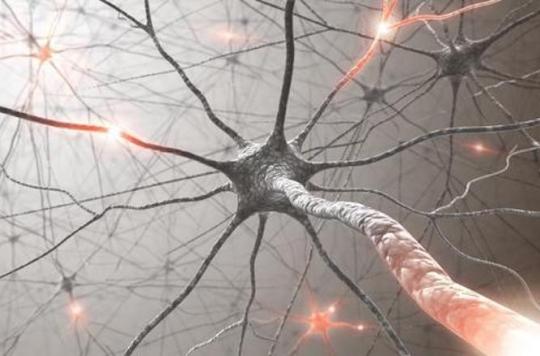A well-known genetic defect in autism is believed to be the direct cause of a deficit in connections between nerve cells. A possible new therapeutic target.

In autistic children, the exaggerated expression of a gene linked to autism spectrum disorders (ASD), and the overproduction of the protein it encodes, would lead to a deficit in connections between nerve cells during brain development.
The variation in the copy number of the Ube3A gene and the resulting over-manufacture of the E6AP protein (“overexpression”) are known to be directly related to autism spectrum disorders (ASD), however the exact cellular and molecular abnormalities to this effect. The origin of the disturbances was less well understood.
Too much expression of the Ube3A gene
Heng-Ye Man and colleagues show that overexpression in neurons of the Ube3A gene results in increased production of E6AP protein bound to it, which leads to a reduction in the number and length of connections (” dendritic branches’) between brain cells.
The modification of the dendritic arborization induced by the excess of E6AP consists of a retraction of the dendrites by thinning and fragmentation of the ends of their branches, which results in the shortening or elimination of these dendrites, “as for a tree that has been pruned too much and whose branches no longer reach neighboring trees ”.
Decreased connectivity between nerve cells
The connectivity of neurons in the brain is reduced, which disrupts the creation of neural circuits that must be developed during learning and maturation of the brain.
These fundamental data come from a new study conducted on cultures of human neurons and a mouse model with autism spectrum disorders, published in The Journal of Neuroscience.
They show that the same pathway is responsible for these changes in cortical and hippocampal neurons in rats and in mice overexpressing Ube3A. These results suggest that a high E6AP activity leads to an excessive reduction in dendrites compared to normal.
Better understanding of disorders
The growth and refinement of the divisions of dendrites, branches of nerve cells that make up tree structures, helps multiply connections with other neurons in the brain.
This “tree branch” of nerve cells is a crucial part of brain development during the first years of life, which helps to optimize the function of neural circuits.
Changes in the number and structure of dendrites have been observed in patients with autism spectrum disorders, which are usually diagnosed during this same period of development.
Determination of a therapeutic target
These results reveal the important role of the hyperfunction of the Ube3A gene – E6AP protein pair in the alteration of the development of the connectivity of the nerve cells of the brain during autism spectrum disorders.
The lack of dendritic arborization and synapse formation between nerve cells linked to the overexpression of this gene and the hypersecretion of the protein linked to it, provide new perspectives in the pathogenesis of Ube3A / autism spectrum disorders. E6AP-dependent. As well as a possible new therapeutic target.

.

















